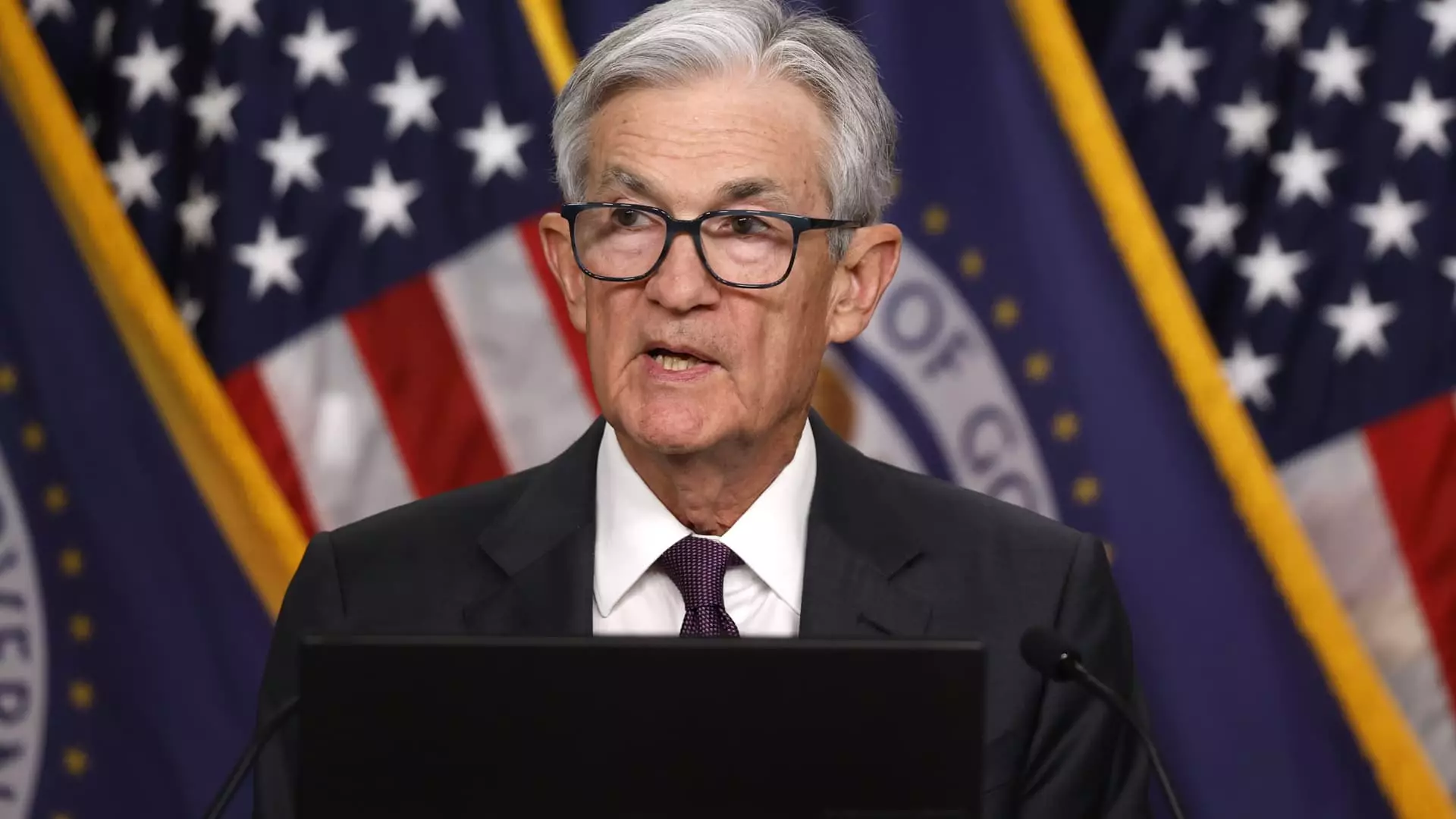In a move that hardly surprised anyone amidst the chaos defined by recent trade wars, the Federal Reserve opted to keep interest rates steady at their current range of 4.25%-4.5%. This decision comes as policymakers are caught in the crosshairs of uncertainty regarding the Trump administration’s unpredictable trade policies. The Federal Open Market Committee (FOMC) announced this decision, indicating an increasing volatility in the economic landscape, thereby prompting a need for patience as they navigate through these uncertain waters. To underline the gravity of this situation, the FOMC’s statement admitted, “Uncertainty about the economic outlook has increased further,” highlighting the unsettling dynamics at play.
While some might see this as an opportunity to stabilize the economy, I view the Fed’s reluctance to act decisively as a warning sign of impending economic turmoil. The hesitance to adjust interest rates in a rapidly shifting economic environment reflects the growing pressures of higher unemployment and the potential for inflationary spikes. Both of these factors could have dire consequences for American families struggling to make ends meet every month.
The Tug of War Between Economic Players
The interplay between Trump’s aggressive tariff policy and its repercussions on the economy showcases a tug of war that policymakers recognize but seem ill-equipped to resolve. Indeed, the dual focus on full employment versus stable prices has become increasingly complicated, mainly due to the uncertainty introduced by ongoing trade negotiations. The risk of stagflation—an economic scenario that combines stagnant growth with high inflation—looms large, echoing fears that many have of returning to the economic mismanagement of the late 20th century.
Despite the optimistic outlook expressed by many economists who argue that the economy will bounce back, key indicators tell a different story. The first quarter saw a disconcerting drop in Gross Domestic Product (GDP) by 0.3%. This contraction was largely driven by plummeting consumer and government spending alongside a notable surge in imports, a situation exacerbated by the tariffs’ pending impact. If policymakers continue to ignore these alarming signals, they risk thrusting the American working class into an economic quagmire that could take years to extricate.
Business Sentiment: A Cautionary Tale
Perhaps the most telling gauge of the economic environment comes from the vantage point of business leaders. Recent surveys depict a landscape steeped in anxiety; resources are tight, pricing is volatile, and many managers could express a growing concern over the supply chain disruptions caused by tariffs. This anxiety is palpable and raises a critical question: What happens when businesses start to retract or even freeze their growth initiatives in light of these challenges?
Surprisingly, the Fed’s meeting postmortem offered little clarity on how they plan to navigate these choppy waters. It revealed broad agreement among committee members that the central bank could afford to “wait and see.” However, one wonders whether this approach is one of sound prudence or just an alarming testament to the paralysis gripping our economic machinery.
The Stock Market: Dancing on a Tightrope
Even more troubling is the stock market’s seemingly fickle response to the Federal Reserve’s stance. The Dow Jones Industrial Average witnessed fluctuations following the announcement, which raises questions about the underlying stability of investor confidence. What we are witnessing is not merely a reaction to monetary policy; it’s indicative of a deeper malaise embroiling the market: a pervasive doubt regarding the government’s ability to effectively manage economic policy amidst such upheaval.
If the Fed continues to project an image of stoic neutrality while the storm brews, investors may eventually become disenchanted, signaling a detrimental decline in market health. It raises a pressing concern—when the optimism dissipates, will the markets go from dancing on a tightrope to a free-fall, causing irreparable harm to average Americans who rely on stock performance to secure their financial futures?
The Uncertain Future: Yellow Lights Ahead
Looking ahead, we are standing at a crossroads, with the Federal Reserve serving as both the watchful guardian and reluctant player in the game of economic chess. Each decision—or lack thereof—demonstrates an alarming deference to political whims that could easily destabilize our economy. The added weight of tariff-induced complexities not only endangers economic forecasts but also threatens to disrupt the livelihoods of everyday citizens struggling to cope with rising costs and stagnant wages.
In an essential moment where we ought to be aggressively pursuing growth, the Federal Reserve’s wait-and-see approach feels more like a car idling at a yellow light, with no clear signal as to when—or if—it will turn green again.

